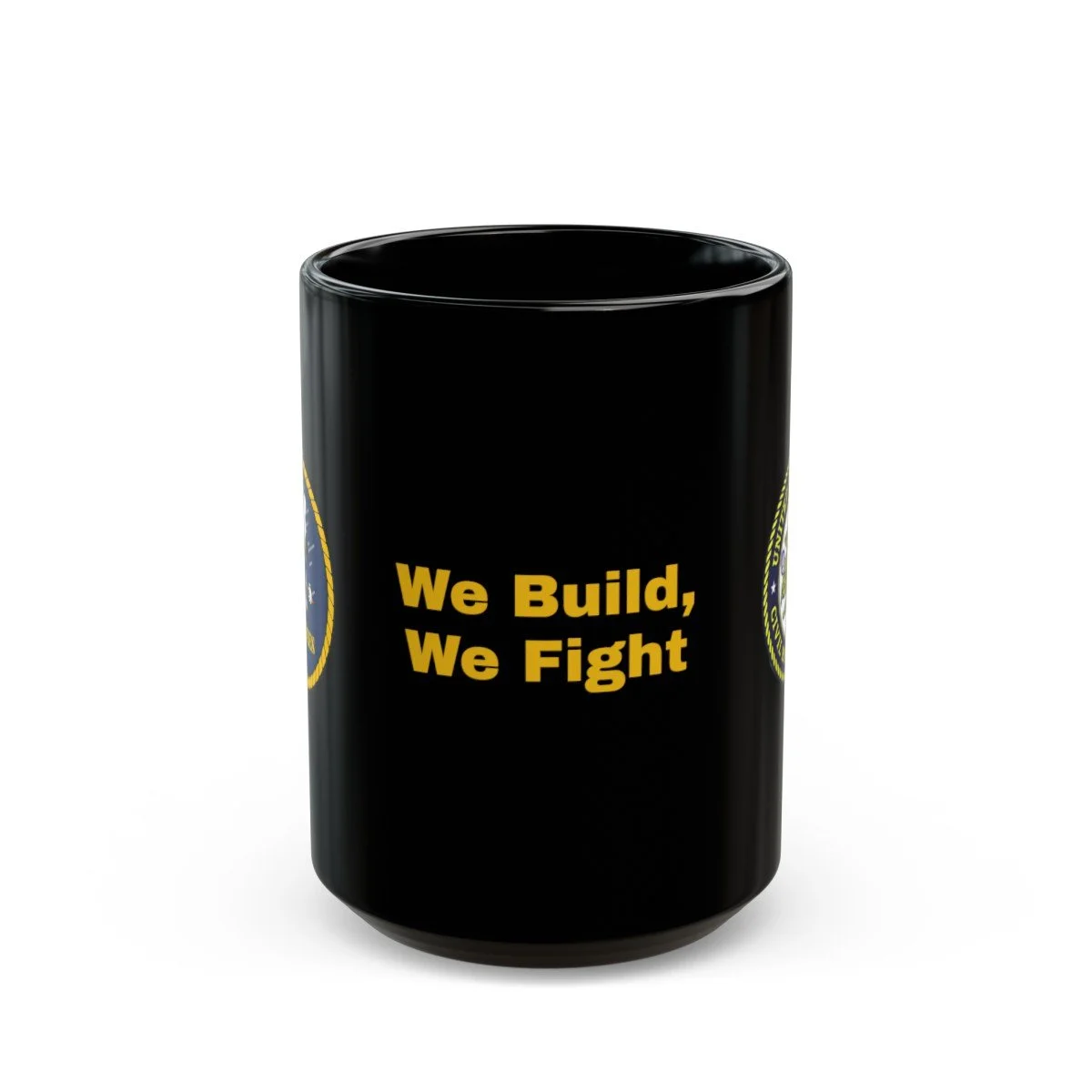 Image 1 of 4
Image 1 of 4

 Image 2 of 4
Image 2 of 4

 Image 3 of 4
Image 3 of 4

 Image 4 of 4
Image 4 of 4





Navy Civil Engineer Corps / Seabee Emblem / "We Fight, We Build" 15 oz Black Ceramic Coffee Mug
Sip your coffee proudly from your CEC Seabee 15 oz Mug. It’s BPA and lead-free, microwave and dishwasher-safe, and made of black durable ceramic. .
Material: 100% ceramic with a glossy finish .
15oz .: C-shaped easy-grip handle .
Microwave and dishwasher safe .
Lead and BPA-free
History of the Navy Civil Engineer Corps
The history of the U.S. Navy's Civil Engineer Corps (CEC) is a reflection of the individual achievements of its members, set within the broader context of organizational development and project accomplishments. Starting in 1798, the need for a shore establishment to support the Navy's operations led to the hiring of civil engineers, the formation of a staff corps of civil engineers, and the creation of the Naval Construction Force, staffed by members of this corps. This collection of historical documents explores the evolution of the CEC through the actions and interactions of its men and women, from the early days of the U.S. Navy to the present. It highlights the establishment of the Bureau of Navy Yards and Docks, the transition of the Navy's civil engineers into commissioned officers, and their significant contributions through various conflicts, including the creation of the Seabees. Understanding this history is essential to appreciate the current state and future direction of the Civil Engineer Corps and its role in supporting the Navy's mission.
Sip your coffee proudly from your CEC Seabee 15 oz Mug. It’s BPA and lead-free, microwave and dishwasher-safe, and made of black durable ceramic. .
Material: 100% ceramic with a glossy finish .
15oz .: C-shaped easy-grip handle .
Microwave and dishwasher safe .
Lead and BPA-free
History of the Navy Civil Engineer Corps
The history of the U.S. Navy's Civil Engineer Corps (CEC) is a reflection of the individual achievements of its members, set within the broader context of organizational development and project accomplishments. Starting in 1798, the need for a shore establishment to support the Navy's operations led to the hiring of civil engineers, the formation of a staff corps of civil engineers, and the creation of the Naval Construction Force, staffed by members of this corps. This collection of historical documents explores the evolution of the CEC through the actions and interactions of its men and women, from the early days of the U.S. Navy to the present. It highlights the establishment of the Bureau of Navy Yards and Docks, the transition of the Navy's civil engineers into commissioned officers, and their significant contributions through various conflicts, including the creation of the Seabees. Understanding this history is essential to appreciate the current state and future direction of the Civil Engineer Corps and its role in supporting the Navy's mission.
